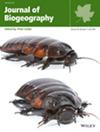Assessing Cetacean Habitat Suitability in the Northeast Pacific From Citizen Science Data
Abstract
Aim
Citizen science is an important source of biodiversity information, particularly for gathering information on species distributions across large geographic areas. However, there are challenges with spatial and species biases, and variation in effort in citizen science data. We aimed to investigate summer and winter habitat suitability for cetacean species reported in the northeastern Pacific by applying species distribution models (SDMs) to opportunistic sightings data submitted to the Ocean Wise Sightings Network (OWSN).
Location
British Columbia, Washington State, South Alaska.
Taxon
Order Cetacea.
Methods
We employed maximum entropy SDMs for the 10 cetacean species most frequently reported to the OWSN between 2002 and 2022. We thinned the dataset to account for spatial bias in sighting locations and used occurrences of non-target species as background points to ensure the same spatial bias in the presence and pseudoabsence data. Best-performing models were selected based on continuous Boyce Index evaluated against null models, and habitat suitability predictions for four species were compared with density surface model (DSM) predictions (Wright et al. 2021) using the Jaccard–Tanimoto Index. Ensemble predictions for each of the 10 species were then made using best-performing models on seasonal means of environmental variables across the study period to produce coast-wide maps of relative habitat suitability for each species.
Results
Across all 10 species, SDMs closely reflected the known seasonal species distribution across the northeastern Pacific. Summer habitat hotspots across all species included: the continental shelf offshore of Vancouver Island and Haida Gwaii and following the deep canyons of Queen Charlotte Sound; and winter hotspots encompassed nearshore waters within British Columbia and Washington, as well as much of Hecate Strait in the north and southern parts of Queen Charlotte Sound. SDM suitable habitat predictions for Dall's porpoise, harbour porpoise, fin whale, and humpback whale in summer 2018 were significantly similar to DSM predictions (Wright et al. 2021) compared using the Jaccard–Tanimoto index.
Main Conclusions
Citizen science is an efficient mechanism for generating data on cetacean seasonal occurrence. Through applying SDMs and accounting for spatial biases in sampling, opportunistic data can be applied to investigate long-term trends in cetacean distribution, especially concerning the impacts of anthropogenic-mediated pressures such as climate change.


 求助内容:
求助内容: 应助结果提醒方式:
应助结果提醒方式:


